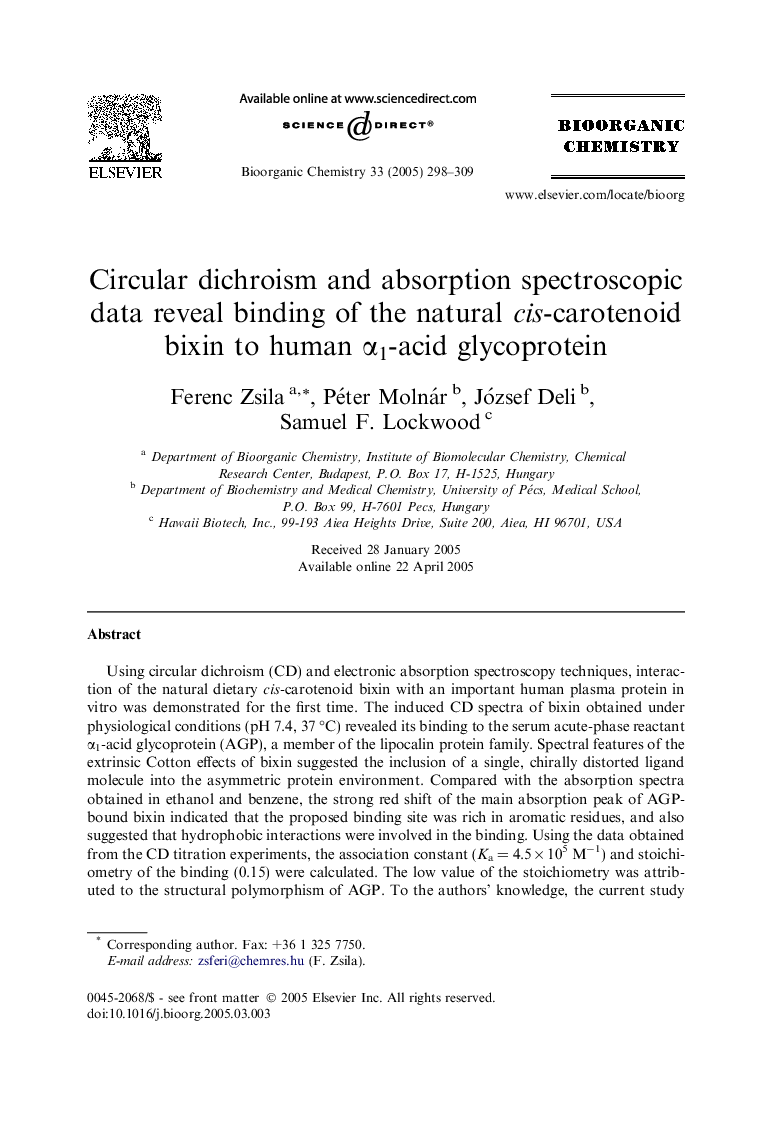| Article ID | Journal | Published Year | Pages | File Type |
|---|---|---|---|---|
| 10582833 | Bioorganic Chemistry | 2005 | 12 Pages |
Abstract
Using circular dichroism (CD) and electronic absorption spectroscopy techniques, interaction of the natural dietary cis-carotenoid bixin with an important human plasma protein in vitro was demonstrated for the first time. The induced CD spectra of bixin obtained under physiological conditions (pH 7.4, 37 °C) revealed its binding to the serum acute-phase reactant α1-acid glycoprotein (AGP), a member of the lipocalin protein family. Spectral features of the extrinsic Cotton effects of bixin suggested the inclusion of a single, chirally distorted ligand molecule into the asymmetric protein environment. Compared with the absorption spectra obtained in ethanol and benzene, the strong red shift of the main absorption peak of AGP-bound bixin indicated that the proposed binding site was rich in aromatic residues, and also suggested that hydrophobic interactions were involved in the binding. Using the data obtained from the CD titration experiments, the association constant (Ka = 4.5 Ã 105 Mâ1) and stoichiometry of the binding (0.15) were calculated. The low value of the stoichiometry was attributed to the structural polymorphism of AGP. To the authors' knowledge, the current study represents the first human lipocalin protein for which carotenoid binding affinity has been explored in vitro with these techniques.
Keywords
Related Topics
Physical Sciences and Engineering
Chemistry
Organic Chemistry
Authors
Ferenc Zsila, Péter Molnár, József Deli, Samuel F. Lockwood,
